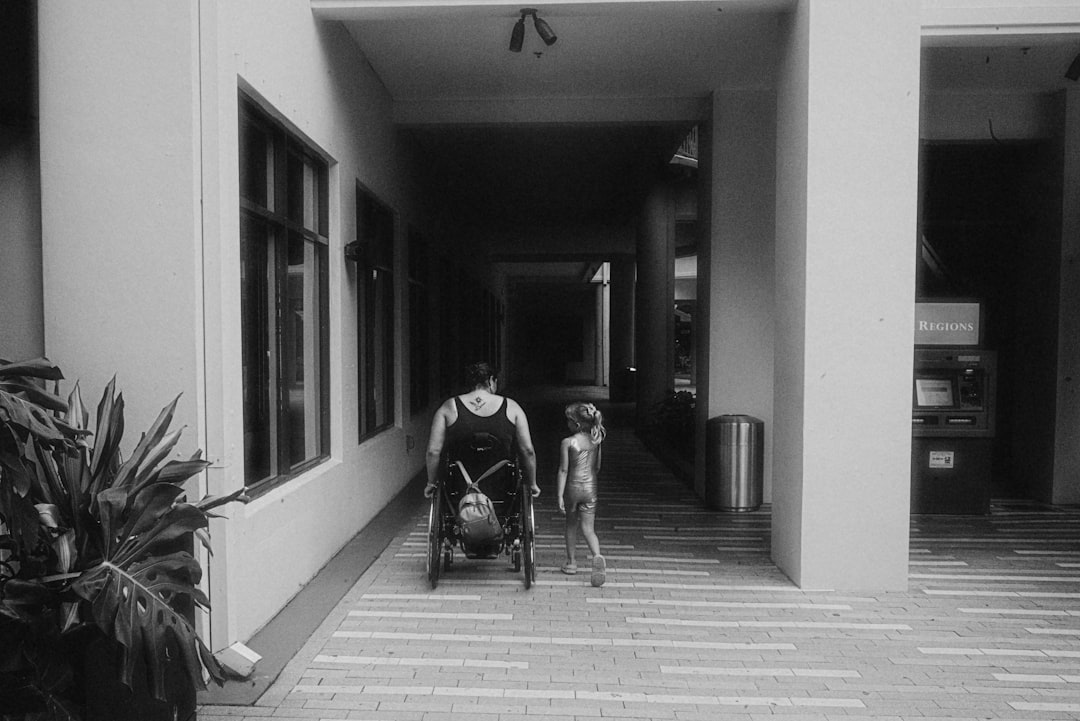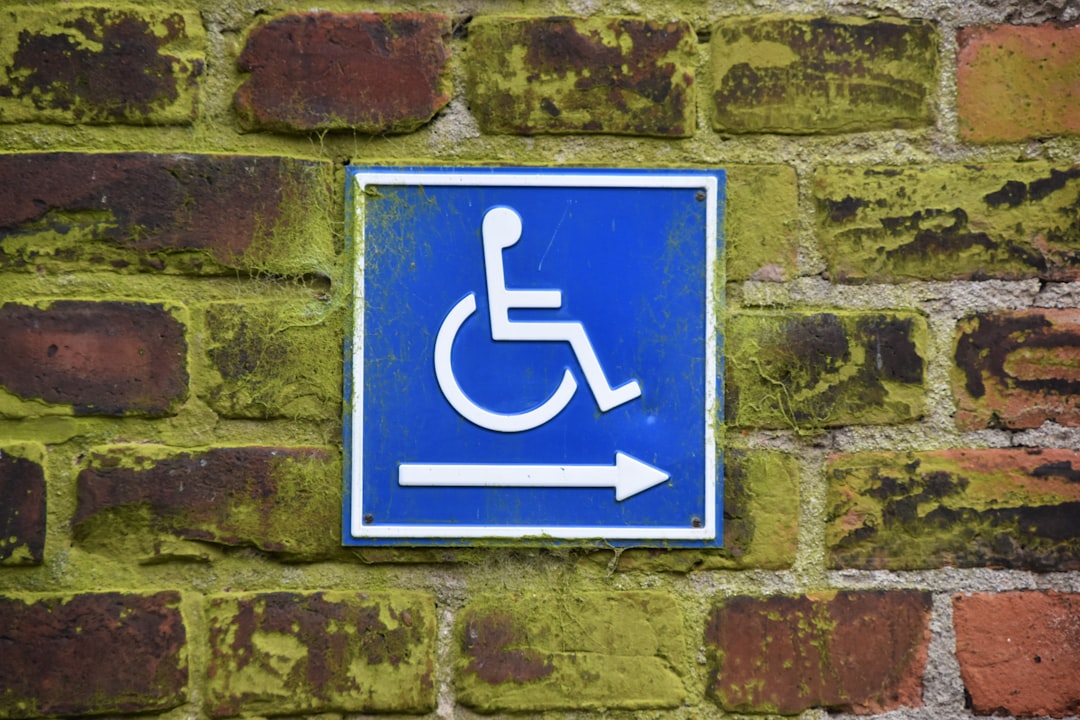

Engage prospects with a scan and streamline customer engagement with FREE QR code marketing tools by Sona – no strings attached!
Create a Free QR CodeFree consultation

No commitment

Engage prospects with a scan and streamline customer engagement with FREE QR code marketing tools by Sona – no strings attached!
Create a Free QR CodeFree consultation

No commitment
Handicap remodeling services are critical for accessible, practical, and comfortable spaces, yet providers regularly face obstacles in both client experience and business growth. Homeowners and property managers seeking ADA-compliant upgrades increasingly expect a seamless, digital-first process, but many providers still rely on manual consultations and outdated brochures. This gap means high-value prospects often go untracked and engagement data remains untapped.
Bridging this digital divide is about more than convenience; it is about capturing hidden demand. Many prospects research accessibility solutions without ever filling out a form or making a call. When there is no quick way to transition from physical collateral to digital touchpoints, these opportunities stay invisible and unpursued.
Strategic QR codes can seamlessly connect physical and digital environments. This technology offers instant access to resources and virtual consults, plus the ability to log each prospect interaction for follow-up. By deploying QR codes thoughtfully, handicap remodeling providers can reduce friction, enrich lead data, and deliver an inclusive, responsive client journey.

QR codes are a simple, reliable bridge between offline curiosity and online action. They help you replace slow, analog steps with fast digital interactions: a homeowner can scan a sign at a job site to see a roll-in shower installation, a property manager can scan a brochure to book a compliance walkthrough, and a caregiver can scan an invoice insert to access a financing worksheet. Each scan creates a measurable touchpoint that you can follow up on, which means fewer missed calls, fewer lost forms, and more qualified consultations.
Start by identifying where friction appears in your current process. If your team hands out printed brochures that rarely lead to consultations, add a QR code that drives scanners to a pre-filled estimate form. If quote follow-ups are inconsistent, use a QR code that links to a self-scheduling calendar and a short needs-assessment. If project sites spark interest from passersby, place a large QR code on the yard sign that opens a gallery of accessible ramps, stairlifts, door widenings, and bathroom remodels. The goal is to turn every offline moment into a digital action that is tracked and nurtured.
This approach helps growth-minded remodelers meet modern expectations without overhauling their entire tech stack. The right QR strategy works alongside your existing marketing and sales tools, so you can improve outcomes quickly while building a foundation for scale.

Interest in accessible renovations often starts quietly. A neighbor notices a ramp installation, a caregiver keeps a brochure from a clinic bulletin board, or a property manager reads a mailer about door widening. Without an immediate way to learn, compare, or book, that interest stalls. QR codes remove this stall by making the next step effortless and trackable.
For handicap remodeling, these scans are about more than convenience. They create visibility into which materials work, where demand is emerging, and which prospects are serious. When every sign, brochure, and mailer becomes a digital onramp, you replace anonymous interest with actionable engagement.
With QR technology and a consistent process, you can prioritize high-intent leads, shorten sales cycles, and deliver a more inclusive experience for clients and caregivers.
Different goals require different QR code types. A self-scheduling flow is not the same as a grant information request, and a busy property manager needs different options than a homeowner planning a future remodel. The right formats help you meet people where they are.
Use dynamic codes for campaigns that need analytics, updates, or segmentation. Static codes are fine for permanent installations like equipment labels that link to maintenance videos. Centralized management with Sona QR helps you generate, edit, and track all formats in one place, which reduces errors and simplifies collaboration.

Many remodelers invest in print marketing and community presence but lack a way to capture intent when it appears. QR codes create measurable entry points wherever interest surfaces and help convert that attention into conversations.
On-site signage is one of the most underused opportunities. Neighbors walking by or delivery drivers are often curious about the transformation happening at a home. A prominent QR code at eye level with a simple line such as “Scan to see this transformation and get a free accessibility checklist” can spark meaningful leads. The same principle applies to mailers and leave-behind materials where scanners can self-qualify and act on the spot.
Placing QR codes strategically ensures you retain both the lead and the context of their interest. You will know which touchpoints merit more investment and which need refinement.

The most effective campaigns match the scan experience to a specific moment in the buyer journey. Start with three focused use cases, then expand as you learn what works in your market.
Each use case should align with a specific outcome such as scan-to-consult conversion, quote acceptance rate, or financing approval speed. Track and compare results across placements to scale the winning plays.
Not all scans represent the same level of intent. A person browsing a project gallery at a community fair is different from a property manager who scans a job site sign and books a walk-through for a 12-unit upgrade. Treat those signals differently so your outreach feels relevant and your sales team focuses on the right opportunities. See intent-driven retargeting.
Use unique dynamic QR codes for each journey stage and placement. Awareness codes might live on posters at senior centers, consideration codes on brochures and comparison guides, and conversion codes on quotes or limited-time offers. Each scan builds a tagged audience in your CRM.
With Sona QR, each code becomes a smart entry point. You can see which audience segments are warming up and which are ready to talk, then route alerts to your sales coordinator so high-intent leads receive priority outreach.
QR codes pull your offline and online efforts into a single, connected system. When every piece of print media drives to a trackable destination, you gain the benefits of digital marketing without losing the reach of traditional channels that still perform well in local services.
Start by mapping your existing channels and identifying where scans can add clarity. If you rely on yard signs and direct mail, add dynamic QR codes to each and compare results by neighborhood and list segment. If you attend health fairs or contractor expos, use QR codes on booth signage and badge stickers to simplify lead capture. If you run social ads, show videos that preview the same resources available via QR, then retarget QR scanners with tailored follow-ups.
A platform like Sona QR helps you centralize codes and performance data. When all scans roll up to one dashboard, you can compare channel performance, identify bottlenecks, and refine your creative and offers with confidence.
A strong QR program starts with clarity. Decide what action you want people to take, then design the shortest, most accessible path to that outcome. The following steps apply whether you are launching your first QR effort or scaling an existing one.
Define one conversion that matters such as “book a bathroom accessibility consultation.” Align that goal to a real-world placement such as yard signs or a clinic brochure rack. For example, if brochures are not translating into calls, your first campaign can drive scans to a self-scheduling page that offers a free ADA compliance checklist after booking.
Select static or dynamic based on your need for tracking and flexibility. In almost every marketing scenario, dynamic wins because it gives you analytics, UTM parameters, and the ability to update the destination.
Design matters. The fastest way to kill performance is a code that is hard to see, hard to scan, or unclear about its value. Keep accessibility in mind across both physical and digital touchpoints.
Place codes where your audience already is. For handicap remodeling, that often includes local neighborhoods, clinic waiting rooms, community centers, and property management offices.
Treat your first deployment as a learning sprint. Track scans and conversions weekly, then adjust creative, placements, and offers based on performance.
This simple framework keeps your team focused and ensures QR codes become a core part of your demand strategy, not a one-off experiment.

Attribution is a common blind spot in local services. You may know that yard signs or mailers generate calls, but you cannot connect a given asset to a booked job or understand which neighborhoods outperform others. QR analytics close this gap by connecting scans to funnel outcomes, then to revenue. See Sona’s blog on offline attribution.
Start by standardizing your tracking. Assign unique dynamic codes to each asset and include UTM parameters for source, medium, and campaign. Route all QR traffic to dedicated landing pages so you can measure conversion cleanly. Push scan data and form submissions to your CRM, then build dashboards that show scan volume, conversion rate, pipeline value, and closed revenue by placement.
When scans, forms, and bookings are connected end to end, you can run your marketing like a performance program. You will know which creative works, which neighborhoods are heating up, and which offers remove the most friction for buyers.
As you scale, small improvements in design, placement, and follow-up can multiply results. Focus on the elements that matter most in a local, service-driven environment.
Creative deployments can also lift results. Add a QR code to post-installation door stickers that links to a care guide and a referral offer. Place a QR code on invoices that opens a two-minute satisfaction survey with a prompt to upload photos of the finished project. Each scan feeds your content library and your pipeline.
Thoughtful QR code implementation goes beyond basic convenience to address the core challenge of tracking and nurturing invisible demand. When effectively integrated, QR campaigns accelerate conversions, enhance client education, and ensure every high-value interaction is captured and actionable.
Key benefits include faster lead qualification, automated follow-up, and comprehensive attribution. By making every offline interaction a possible digital entry point, handicap remodeling providers can ensure sustainable, inclusive growth.
Strategic QR code adoption allows handicap remodeling businesses to overcome challenges in lead capture, client communication, and campaign measurement. By transforming each interaction, whether a scan at a job site or an in-home packet, into actionable data, providers not only meet modern homeowner expectations but secure every qualified opportunity. This approach advances both accessibility and business success by turning analog touchpoints into engines for growth and insight. With Sona QR, you can generate and track your first codes in minutes, then use Sona to connect scans to pipeline and revenue for a complete view of performance. Start creating QR codes for free.
QR codes have revolutionized handicap remodeling services by transforming how providers connect with clients seeking accessible living solutions. They simplify access to detailed project information, streamline appointment scheduling, and deliver personalized remodeling options—all while capturing valuable insights into customer preferences and behaviors. Imagine instantly guiding potential clients through tailored remodeling ideas and resources with a simple scan, turning curiosity into confident decisions.
With Sona QR, you can create dynamic, trackable QR codes that update in real time without costly reprints, enabling you to refine your outreach and improve client engagement effortlessly. Each scan links directly to meaningful interactions, helping you acquire more customers, enhance their experience, and demonstrate the impact of every touchpoint on your business growth. Start for free with Sona QR today and unlock the full potential of every scan to build a more accessible, customer-focused remodeling service.
Handicap remodeling services create accessible, practical, and comfortable spaces that improve client experience and comply with ADA standards.
The article does not specify exact costs for handicap remodeling services.
Yes, handicap remodeling providers often include financing options and links to funding resources such as VA benefits, Medicaid waivers, state grants, and partner financing calculators.
Common modifications include accessible ramps, stairlifts, door widenings, roll-in showers, and bathroom remodels.
You can find reputable services by scanning QR codes on signage, brochures, or mailers that link to virtual portfolios, compliance checklists, and self-scheduling pages for consultations.
QR codes bridge offline and online engagement by providing instant access to resources, virtual consults, financing info, and scheduling, while enabling providers to track and nurture leads effectively.
Common QR code formats include web links to galleries, vCards for contact info, pre-filled forms for estimates, SMS or email messages, and app downloads.
Effective placements include yard signs, printed brochures, direct mail, in-home packets, event booths, and clinic waiting rooms.
Providers use dynamic QR codes with UTM parameters connected to CRMs to track scan data, conversion rates, and revenue attribution for channel and campaign optimization.
Design should ensure high contrast, clear CTAs, accessibility compliance with readable fonts and alt text, and thorough scannability testing across devices and environments.
QR codes enable automated follow-up through triggered emails or SMS, one-click booking links, and nurture sequences based on the prospect's scanned content or stage in the buyer journey.
QR codes integrate offline materials like print and signage with online assets, enabling consistent tracking, retargeting, and unified campaign management across channels.
Use Sona QR's trackable codes to improve customer acquisition and engagement today.
Create Your FREE Trackable QR Code in SecondsJoin results-focused teams combining Sona Platform automation with advanced Google Ads strategies to scale lead generation

Connect your existing CRM

Free Account Enrichment

No setup fees
No commitment required

Free consultation

Get a custom Google Ads roadmap for your business






Launch campaigns that generate qualified leads in 30 days or less.
